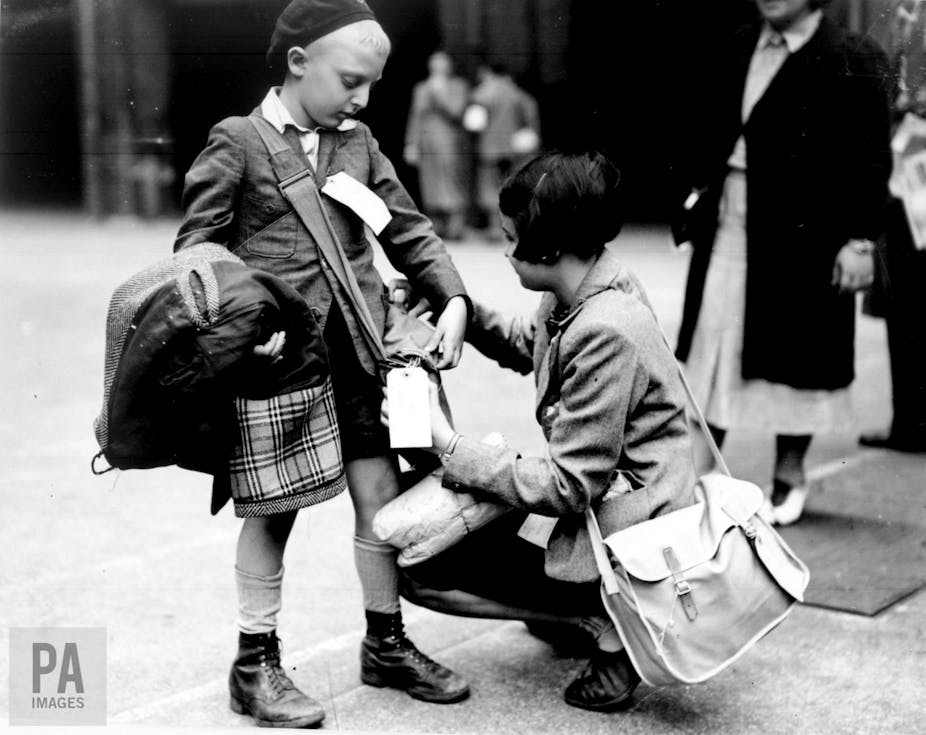Refugees are awkward. Their arrivals are typically unpredictable and hard to anticipate. They raise immediate logistical difficulties, and frequently give rise to difficult diplomatic and political situations.
While each new movement of refugees can feel unprecedented – this is an illusion. Over the last century, each decade has seen significant movements of refugees fleeing war, mass atrocities, political repression and civil breakdown.
Those looking for solutions to current refugee movements often turn to history to provide answers to today’s refugee situation. The 1930s offer compelling, if often disheartening, comparisons with the present. As today, 1930s Britain found itself in a rapidly changing world, and one in which its imperial influence was in decline.
In Europe, the internationalism of the 1920s that led to the creation of the League of Nations as a vehicle to prevent international conflict was in retreat. The 1930s saw instead a toxic combination of economic depression, the rise of totalitarian communism and fascism, and the ongoing insistence of the major powers, including Britain, to put their own national interests first.
In the 1930s, a European state’s authority to control its own borders, and how to treat its population within those borders, was sacrosanct. This principle of state sovereignty meant the democratic powers were unwilling to challenge the treatment of people under Germany’s Nazi government. It also meant that there were no international mechanisms requiring any nation to receive refugees once they had left Germany.
And rather than giving refuge to Jews and others fleeing Nazism, democratic nations instead engaged in “competitive restrictionism”: each feared they would bear the brunt of refugee arrivals if they didn’t maintain strict visa requirements. Britain, alongside countries including the US, Canada, Australia and South Africa, maintained “paper walls” keeping out many thousands of refugees, in part citing concerns that allowing Jews in would only increase antisemitism.
Read more: British media suspicion of child refugees goes back to the 1930s
By September 1939, Britain had accepted roughly 80,000 refugees – mainly German and Austrian, but also some Czechs – out of the 500,000 to 600,000 refugees who sought entry.
The British government’s immigration policy up to 1939 classed refugees along with all other “aliens”, or non-British subjects. And no alien was granted entry who might “become a charge on the rates”, that is, to receive state welfare payments. For refugees forced to leave behind their possessions and money this was an enormous hurdle, particularly when regulations also barred them from taking up most paid work.
The parallels with today’s world are striking. The UN is deprived of the influence it wielded during the Cold War. There is a global rise of nationalism, Islamophobia and economic protectionism. And ever tightening immigration and asylum regimes mean refugees and the dispossessed continue to risk their lives to cross the Mediterranean or the Channel tunnel.

Local groups step up
In the face of inaction by governments, in the 1930s, as today, newly formed refugee organisations sprang up to meet the challenge.
Both national organisations, such as the German Jewish Aid Committee, and local refugee organisations in towns across Britain sought to cut through this problem by guaranteeing to cover all of an individual refugee’s costs while in the UK. Fundraising material stressed again and again the crudeness of the equation they faced – that the number of refugees they could save: “Depends entirely upon the amount of money subscribed.”
But across Britain – even in towns as small as Worthing, where the Refugee Committee supported over 500 refugees – undaunted volunteers collected clothing, food parcels and financial donations. They pooled their ration coupons and spoke up publicly about the need for international solidarity. They invited the refugees of the town for tea, took them to the cinema and on outings. They wrote to those who had come to Britain only to be interned as enemy aliens after 1940, sending them messages of support, food parcels and continued to look after family members.
We might expect that the stark reckoning facing such committees – their guaranteed sponsorship equalled the rescue of one refugee – has been consigned to history. In fact, it was revived last year via the Conservative government’s community refugee sponsorship scheme. This stands both as a symbol of the commitment of voluntary groups to actively enable refugees to come to Britain, and entrenched state reluctance to commit resources to their reception and resettlement. The refugees selected come as part of the government’s Vulnerable Person Resettlement Programme, and are mainly Syrian families from camps in Lebanon, Jordan and Turkey.
In order to be accepted under the scheme, civil society groups must prove an extensive and long-term commitment to any sponsored family. Groups are expected to provide housing for each family, as well as help them “to integrate into life in the UK, access medical and social services, arranging English language tuition and supporting them towards employment and self-sufficiency”. When they have fulfilled all the requirements, one family is granted entry to Britain.
The red tape surrounding the scheme was such that in January 2017, six months after its launch, only two families had been settled under it. But even when refugee groups are successful, the fact remains that, as in the darkest days of the late 1930s, the British government seems committed to ducking responsibility for some of the world’s most vulnerable citizens.

